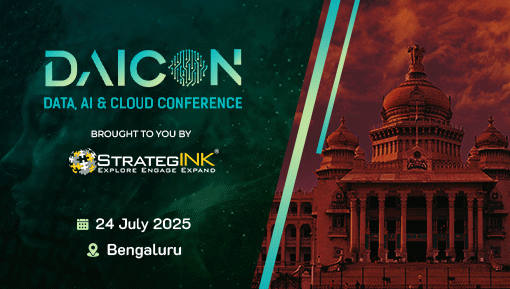
Is there any element of our lives untouched via media? Hmm, it seems not!
Let’s contemplate for a moment. Media is all around us, whether we’re running, exploring the town or just scrolling through social media. More than ever, we’re eating content material and technological trends permit us to actively engage in its manufacturing.
Almost every person can create photos, edit movies, and observe a laugh filter on websites/apps like Instagram, TikTok, Canva, Snapchat and plenty of more in the recent times.
Synthetic media refers to any kind of media, which includes still images, motion pictures, audio recordings and text, that have been generated or altered using synthetic intelligence (AI) and system mastering (ML) techniques. These techniques can contain deep learning algorithms, neural networks and other kinds of AI to create content that is either completely artificial or a manipulation of present content.
There are numerous uses of artificial media, within entertainment, advertising, and content development. But it also brings up issues with false records, privacy, and potential abuse. There will probably be consistent debates on ways to solve these problems along with an aim to maximize the advantages of artificial media tendencies as they progress. AI-generated art, text era, voice synthesis, deepfakes and much more are examples of synthetic media that are already beyond our wildest desires.
Several factors have contributed to the rise of synthetic media:
- Availability of Data: Approximately 2.5 quintillion bytes worth of data is generated daily. This vast amount of digital data, including images, video and text, has led to the development of AI algorithms that can recognize shapes and techniques from existing sources, enabling more realistic synthetic media.
- Advancements in AI and ML: Advances in AI research, especially in deep learning and generative modeling, have enabled machines to understand and process various media such as images, video, audio, and text.
- Accessible Tools and Platforms: AI democratization makes AI accessible to customers who may not have the technical expertise of AI, thereby empowering these individuals with the benefits and opportunities of this technology. The democratization of AI technology and the provision of user-friendly tools and platforms have enabled a broader range of people and groups to experiment with and create synthetic media.
- Rise of Deep Learning Architectures: The adoption of generative AI is gaining significant momentum, with two approaches particularly gaining popularity – Generative Adversarial Networks (GANs), for multimedia and Variational Autoencoders (VAEs), for signal analysis. Deep learning architectures such as GANs & VAEs and transformers, are driving a generation of diverse and varied synthetic media. These technological developments are driving significant advancement in the field of media.
- Applications Across Industries: Synthetic media carries significant positive implications and offers diverse opportunities. Its applications extend to creative expression, advertising, entertainment, education, and beyond.
- Entertainment: In the entertainment industry, synthetic media has become the norm, with extensive use of computer-generated imagery in movies. The public may now employ AI to create realistic visual assets for a variety of creative and artistic applications, such as graphic design and storytelling, thanks to platforms like Midjourney. Using Photoshop’s generative fill function, Adobe can create material automatically depending on what already exists in the image. It can be applied to complete gaps in an image in a way that blends in with the surroundings.
- Advertising: The advertising and marketing sectors are additionally employing synthetic media extensively, from customized advertisements to product visualization. Businesses like techUK member Amazon have integrated augmented reality into their smartphone application, enabling users to position virtual furniture and home decor in their physical surroundings, assisting them in evaluating how things might seem in their homes before making a purchase.
- Healthcare: In medical training simulations, medical personnel can perform procedures on virtual patients thanks to the use of synthetic media. Moreover, 3D medical imaging systems have aided in the planning and practice of difficult surgery by surgeons. Synthetic health data can replicate the characteristics of a target sample, such as individuals with diabetes or rare diseases, and offer the information samples required for medical researchers to carry out their research and test novel concepts and theories.
Synthetic health records are built using technology from scratch and verified using real-world data to make them realistic. They are not the same as de-identified or censored data, which are based on patient records that have had their private information deleted. This implies that information produced in this manner can never be linked to a particular person or their medical history.
Synthetic data vs real data
While the use of synthetic data commenced in the early 1990s, its popularity surged notably in the 2010s as advancements in computing power and storage capabilities propelled it to new heights.
Some of the benefits of synthetic data over real data are:
- Fewer restrictions on data usage – Real data is frequently subject to several limitations resulting from privacy legislation and other restrictions, even while its usage is subject to fewer restraints. Synthetic data, on the other hand, preserves ownership rights and privacy while accurately reproducing the fundamental statistical characteristics of real data, allaying these worries.
- Addressing the scarcity of real data – Data is frequently used to test novel treatments or goods, however industries frequently struggle with small data sets. This data scarcity can be lessened with synthetic data, which can also provide data that is rarely seen in real-world situations, like cases involving rare diseases.
- Generating data for machine learning – Large amount of specialized data is required for machine learning algorithms to examine and identify patterns. For example, it is extremely expensive to generate the data required in real-world scenarios to train the AI systems that drive self-driving automobiles. Under such circumstances, artificially generated data can efficiently lower expenses while providing sufficient information to accelerate learning.
However, the emergence of synthetic media also raises significant ethical, legal and societal concerns, including issues related to misinformation, privacy infringement, identity theft and the erosion of trust in digital content. As a result, there is a growing need for regulatory frameworks, ethical guidelines, and technological solutions to address these challenges and promote the responsible use of synthetic media technologies.
Rising risks and regulatory concerns
Hyper-realistic deepfakes, in which a person’s voice or face is subtly replaced with another person’s, have historically been an expensive and time-consuming undertaking. But this environment is about to change with the introduction of new, more approachable generative AI tools. As a result, there is growing concern about the possible abuse of synthetic media, which includes media produced by AI or with its assistance. Regulators are currently scrambling to put restrictions on its possible misuse.
With its impact on culture, society, and the media landscape, the emergence of synthetic media signifies a dramatic change in the production, consumption, and sharing of material in the digital age. Synthetic media has interesting opportunities for creativity and innovation, but it also has some serious risks and challenges that need to be considered.
Misinformation and Manipulation: Deepfake films and altered photos are examples of the kind of content that may be produced using synthetic media and are convincing despite being completely fake. This technology can be used to disseminate false information, sway public opinion, and erode confidence in reliable sources of information.
Privacy Concerns: Because it is possible to generate synthetic media using people’s voices, faces, and personal information without their knowledge, the ability to change media content raises severe privacy problems. This brings up concerns about identity theft, consent, and the improper use of personal information.
Impacts on Journalism and Authenticity: The legitimacy and authenticity of digital content are questioned by synthetic media, making it more challenging to discern between false and true information. This may have detrimental effects on journalism as well as public confidence in information sources and media outlets.
Ethical Considerations: Consent, privacy, and potential harm are among the ethical issues that are brought up by the production and distribution of synthetic media. Concerns exist around best practices and ethical standards for the appropriate use of synthetic media technologies, as well as the possibility of abuse, harassment, and exploitation.
Legal and Regulatory Challenges: The advent of synthetic media presents legal and regulatory obstacles including defamation, privacy regulations, and intellectual property rights. The complexity of synthetic media may be beyond the scope of current legal systems, necessitating the necessity for new laws and enforcement strategies.
Security Risks: Technologies related to synthetic media can potentially be exploited by hostile parties, such as state-sponsored entities and cyber criminals. The creation and use of synthetic media platforms and tools have raised worries over the possibility of cyberattacks, data breaches, and security flaws.
By promoting responsible usage, establishing ethical guidelines, and fostering public awareness, we can unleash the complete potential of synthetic media and pave the way for a future where imagination knows no bounds.





